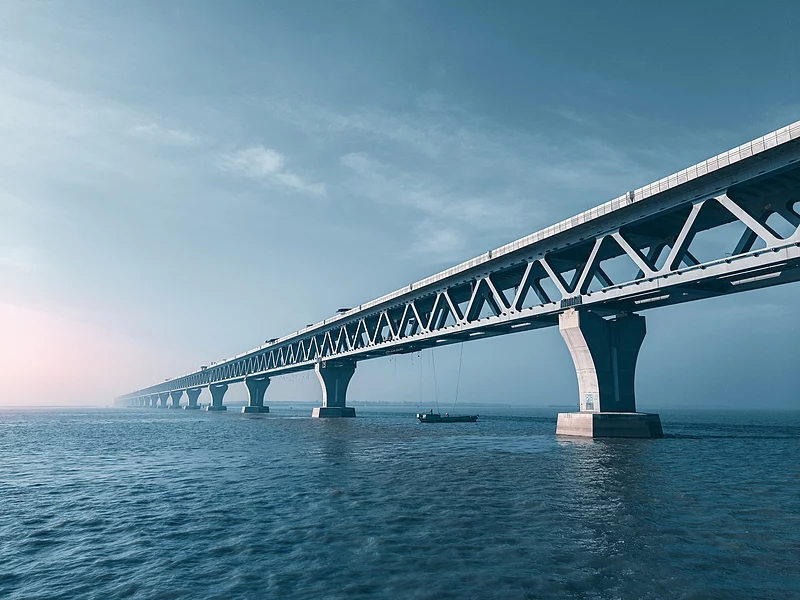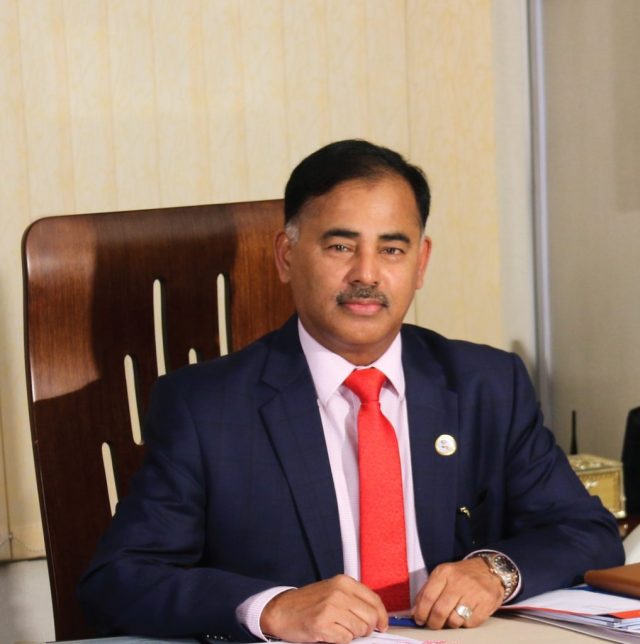Md. Ataur Rahman Prodhan
CEO & Managing Director
Sonali Bank Limited
Wherever we stand in these fifty-five thousand square miles of red-green, this line inevitably becomes true wherever we seek refuge in history or in the future. The shining light of Bangabandhu Sheikh Mujibur Rahman, the best Bengali of the millennium and the creator of this Nation, is still spreading to Bangladesh and its people through his daughter Prime Minister Sheikh Hasina.
With her visionary leadership, courage, and prudence, we are going to get the most coveted installation in the history of the country, the Padma Bridge, the dream of millions of people. What we had just two decades ago is like a dream, like a canvas of imagination. Today it is significant evidence of Bangabandhu’s daughter’s pure patriotism and challenge.
During the first government of Sheikh Hasina, with the inauguration of the Bangabandhu Bridge over the Jamuna River on June 23, 1998, the communication system of Bangladesh began to change drastically, and economic growth began to accelerate. In 1999, her government began the pre-feasibility study of the Padma Bridge. Towards the end of her term, on July 4, 2001, Honorable Prime Minister Sheikh Hasina laid the foundation stone of the Padma Bridge at the end of Mawa port.
Like her father, she also believes in self-reliance in dealing with the battle of life. She stood against adversity and showed the nation a dream of building the Padma Bridge. This bridge is just a vast installation that is not only the foundation of economic prosperity but also the unique symbol of our national potential. It is a beacon of Bengali self-confidence, arrogance, and pride. The primary foundation of Padma Bridge was the steely morale of the strong Bangabandhu daughter in solid patriotism.
What a wonderful match for history! In 1971, the father of the Nation gave us the gift of an independent Bangladesh. On the golden jubilee of that independence and the last span of the Padma Bridge became visible as a symbol of Bangladesh’s potential.
However, the path to starting the construction of the Padma Bridge was challenging. Initially, the Asian Development Bank pledged financial assistance for the Padma Bridge. The World Bank agrees as the main lender. JICA and Islamic Development Bank (IsDB) were also involved in financing. But then the World Bank accused a local and foreign group of corruption in hiring a bridge consultant. Although they could not prove the allegation, they canceled the contract for the Padma Bridge project on June 29, 2012. As a result, ADB, one of the other lenders, along with the World Bank, JICA, and IsDB, moved away.

The construction of the Padma Bridge with its own funds was unrealistic for many. Many suggested continuing discussions with the World Bank to build the bridge efficiently. But Bangabandhu’s daughter Sheikh Hasina did not allow the country’s people to be humiliated in the world. With courage and high morale, she ignored doubts and criticisms and went ahead with an indomitable desire to build the Padma Bridge with her own funds.
At that time, the Prime Minister took a far-sighted decision to stop the deep domestic and foreign conspiracies over the Padma Bridge. In July 2012, she told a cabinet meeting that Bangladesh would build the Padma Bridge with its own funds. The mass uprising started in the country. When the country’s people heard about the construction of the Padma Bridge, they all cooperated with the government. At that time, two accounts were opened in the local office of Sonali Bank Limited.
Hundreds of people deposited their hard-earned money there. The funds have been received from a rickshaw puller, a student, a day laborer, which showed their full passion and love. Following this, on January 12, 2015, the Prime Minister inaugurated the construction of the main bridge. Later, in 2017, a Canadian court ruled that the World Bank’s allegations against the Padma Bridge were false.
Today, a decade later, it seems that the decision of Honorable Prime Minister Sheikh Hasina was undoubtedly correct. In that situation, she was able to decide to establish the Padma Bridge with her own funds only because she is the daughter of Bangabandhu Sheikh Mujibur Rahman.
In terms of infrastructure, Padma Bridge is one of the largest structures in the world. A total of 41 spans have been installed on 42 pillars of the bridge, constructed by piling a 40-storied building underwater in the Padma river. The main length of the bridge is 6.15 km. The upper level of the two-tiered bridge has a 22-meter wide four-lane road, and the lower level single-lane broad gauge railway will be constructed. At both ends of the bridge are for flyover, also for railways.
Moreover, the bridge has gas transmission lines, fiber optics, and telephone ducts. Kshatriya is a high-voltage power line downstream of the bridge. Toll plazas, police stations, service areas, weigh stations, emergency assistance centers, bridges, box culverts, underpasses, and other infrastructures have also been constructed on both sides of the bridge.
As a result of the construction of the Padma Bridge, 21 districts in the southwest will directly benefit from it. The long-cherished dreams of millions of people living in these districts will change their lifestyles after its inauguration. However, all sectors, including the agro-industry, will get a huge development speed. This region will become the main production center of the country. Products produced in these areas, predominantly agricultural and perishable goods, can quickly enter the capital. The entire country is connected to the land ports of Payra, Mongla, and Benapole through direct communication between the capital city and Chittagong.
The economy of Bangladesh has a possibility to boom. Khulna’s frozen fish and jute industry will expand. Besides, Dhaka and the south will not be too far to reach for this bridge. The trade deficit within the country will also be reduced at a great time.
In the meantime, various industries are being set up in different areas around the bridge. Among others, the master plan of establishing Olympic Village, Bangabandhu Satellite City, Hitech Park, Airport, and Jazira Naodoba Sheikh Hasina Tantapalli at Munshiganj can bring the socio-economic condition greatly improved.
According to the survey, the gross domestic product (GDP) will increase by 1.23% after the bridge launch. Southwestern GDP will grow by 2.3%. Poverty will be reduced to 0.84% every year.
According to an Asian Development Bank (ADB) survey, at least 24,000 vehicles will pass through the Padma Bridge in 2022, of which 8,238 will run buses, 10,244 trucks, and more than 5,000 microbuses and private cars. By 2025, daytime traffic on the bridge will increase to 27,800, in 2030 to 36,785, and in 2040 to 51,807. Millions of people will be employed only through this. Although it seems to be in the southwest, in fact, the Padma Bridge will serve as an excellent foundation for the economy of the whole country. Gradually it will change the economy and tourism of the whole of Bangladesh. It is not far from that day; the bridge connects South Asia and Southeast Asia in many areas, including communication, trade, and tourism will become necessary.
As the long-awaited Padma Bridge and the connecting road are part of the Asian Highway Route AH-1, it will be an excellent opportunity to connect with the South Asian countries, including internal communication between the countries. The bridge will also connect the Trans-Asian Highway and the Trans-Asian Railway with India, Bhutan, and Nepal. The tourism sector associated with these routes will be expanded. It is being said that the Padma Bridge will play a massive role in Bangladesh’s development and economy within 2035-40.
To read more Scholar’s Advice, Please Click Here!




















